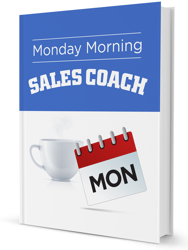Improving Your Closing Average
A recent survey by CSO (Chief Sales Officer) Insights revealed the following dismal forecasting facts:
- 94% of forecasted sales are incorrect (they don’t close when forecasted or for the $ amount forecasted)
- 54% do not close at all, with…
- 30% of forecasted sales going to the competition, and…
- 24% of the time the buyer does nothing
This research demonstrates that, by and large, salespeople don’t have much of a clue about what their prospects are going to do. There are two primary contributing factors:
- poor qualifying skills (the salesperson doesn’t get it) and
- weak pipelines (where salespeople are hesitant to let anybody get away)
All too often salespeople are chasing “deals” that will probably never materialize, wasting their time, creating attitude problems for themselves, and misleading their employers.
Before you even agree to give the prospect a proposal, there are some serious questions you need to ask yourself. Give yourself a rating from 1-5 (highest) on each issue. If your total points don’t add up to at least 20 (out of a possible 35), you have to wonder why the prospect is even in your forecast.
- You understand the prospect’s problem thoroughly and can provide, at a minimum, a satisfactory solution.
- The prospect has to do something – it is not an option to do nothing. (If doing nothing is an option, they might very well select that option.)
- The prospect has the necessary resources to solve the problem and is willing to spend those resources. (If they don’t have the money to invest in your solution, you’re wasting your time. )
- You have access to the decision maker and will make your presentation to him/her. (Never make a presentation to someone who can’t say “yes.”)
- The prospect needs to implement a solution in a time frame that makes sense for you from a business standpoint. (Time kills deals.)
- You understand the prospect’s selection criteria and have a reasonable chance of meeting them successfully. (If this is a price driven deal, for example, and your prices are normally higher than your competitor, chances are you won’t win the business.)
- The prospect is considering only a small number of solution providers and is not putting the deal out to every competitor in town. (If the number of players still at the table is large, it simply reduces your chances of winning.)
Self-Study Assignment: Complete this analysis on every prospect before you decide to deliver a proposal. If your score doesn’t exceed 20 points, you seriously need to determine whether presenting a proposal now makes sense, if you need to do more qualifying, or perhaps need to pull the plug and move on.


